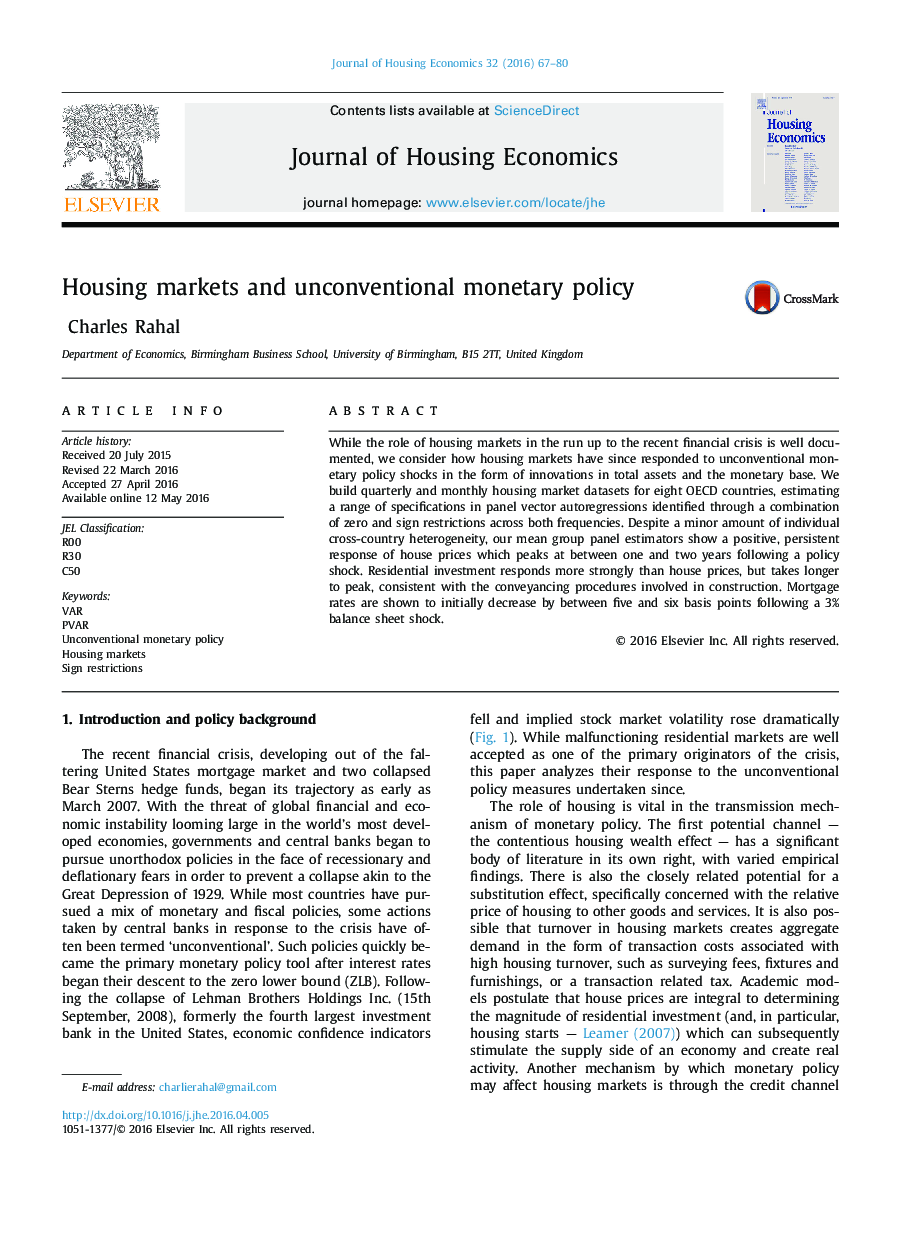| Article ID | Journal | Published Year | Pages | File Type |
|---|---|---|---|---|
| 961892 | Journal of Housing Economics | 2016 | 14 Pages |
•We create cross-country monthly and quarterly databases of housing markets.•We estimate various PVAR models identified with zero and sign restrictions.•We show a positive, persistent response of house prices and residential investment.•The response of house prices peaks between one and two years following a policy shock.•The results are robust to a range of specifications and across frequencies.
While the role of housing markets in the run up to the recent financial crisis is well documented, we consider how housing markets have since responded to unconventional monetary policy shocks in the form of innovations in total assets and the monetary base. We build quarterly and monthly housing market datasets for eight OECD countries, estimating a range of specifications in panel vector autoregressions identified through a combination of zero and sign restrictions across both frequencies. Despite a minor amount of individual cross-country heterogeneity, our mean group panel estimators show a positive, persistent response of house prices which peaks at between one and two years following a policy shock. Residential investment responds more strongly than house prices, but takes longer to peak, consistent with the conveyancing procedures involved in construction. Mortgage rates are shown to initially decrease by between five and six basis points following a 3% balance sheet shock.
